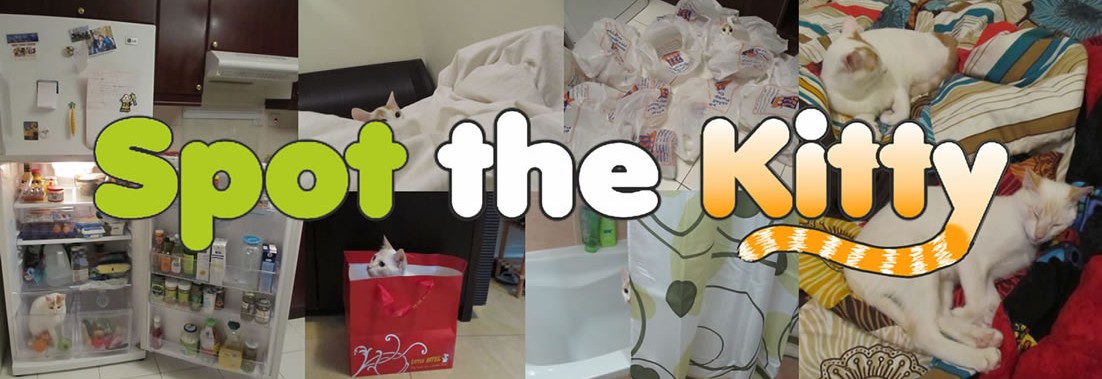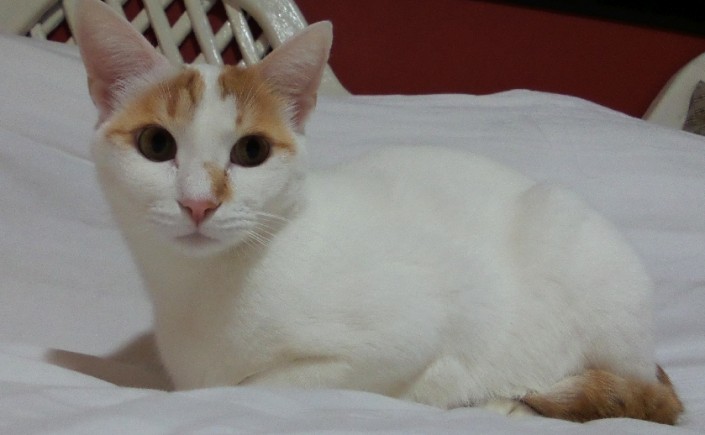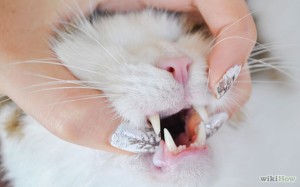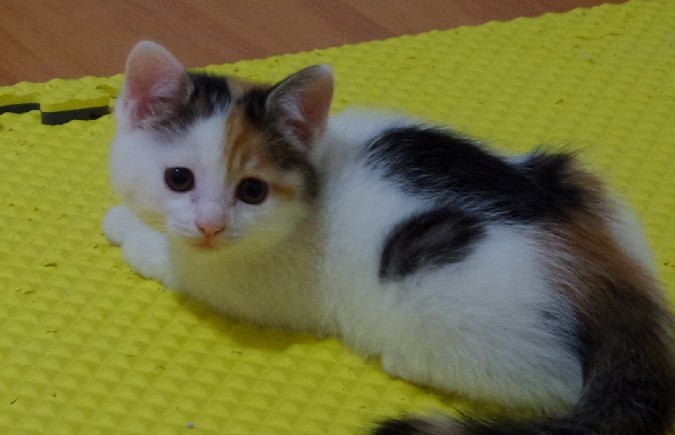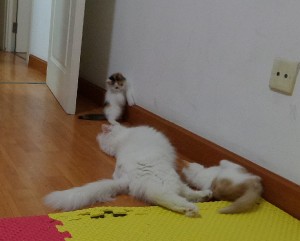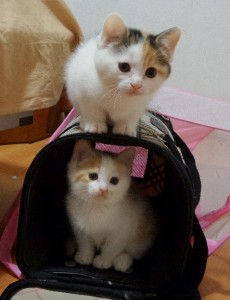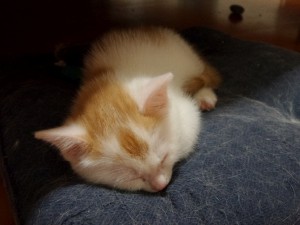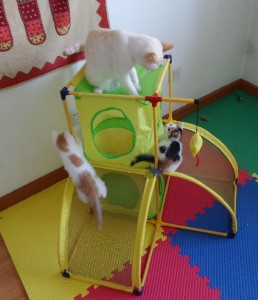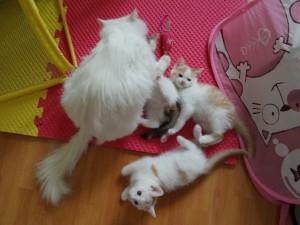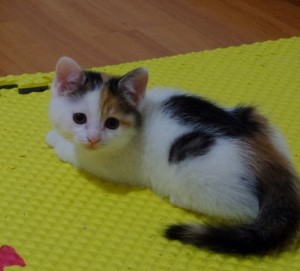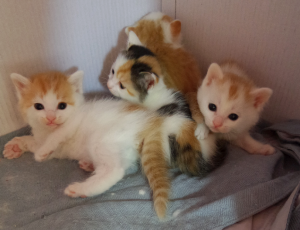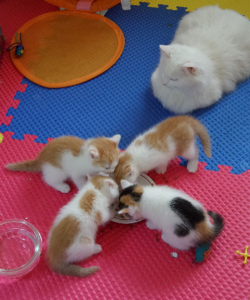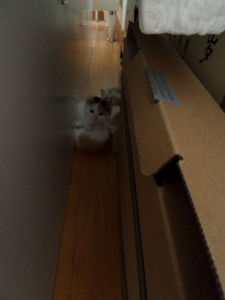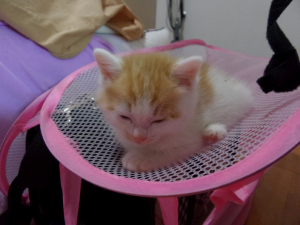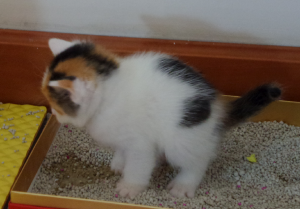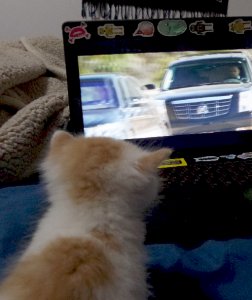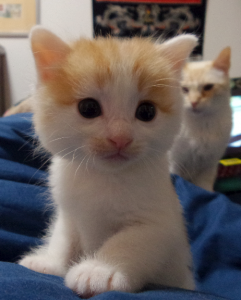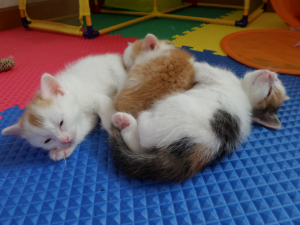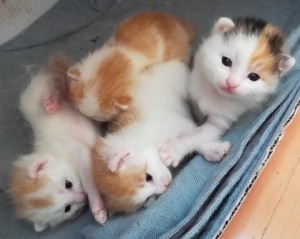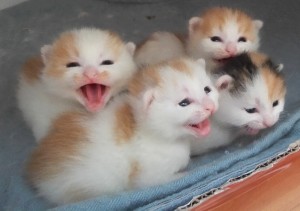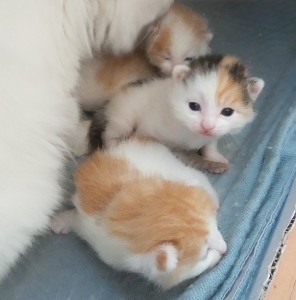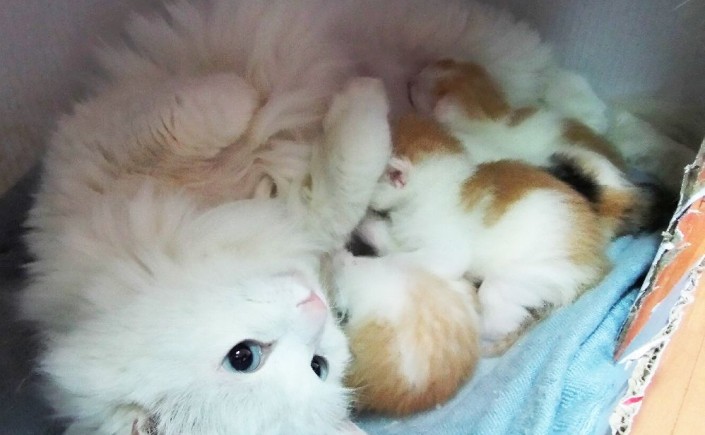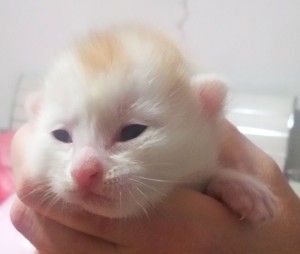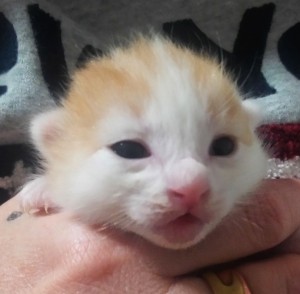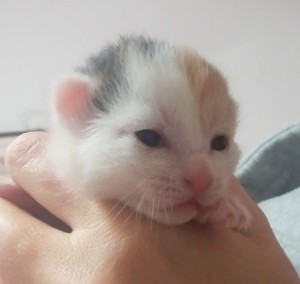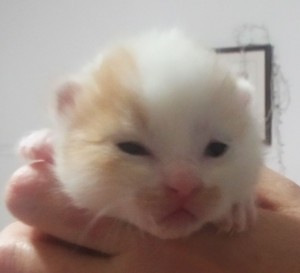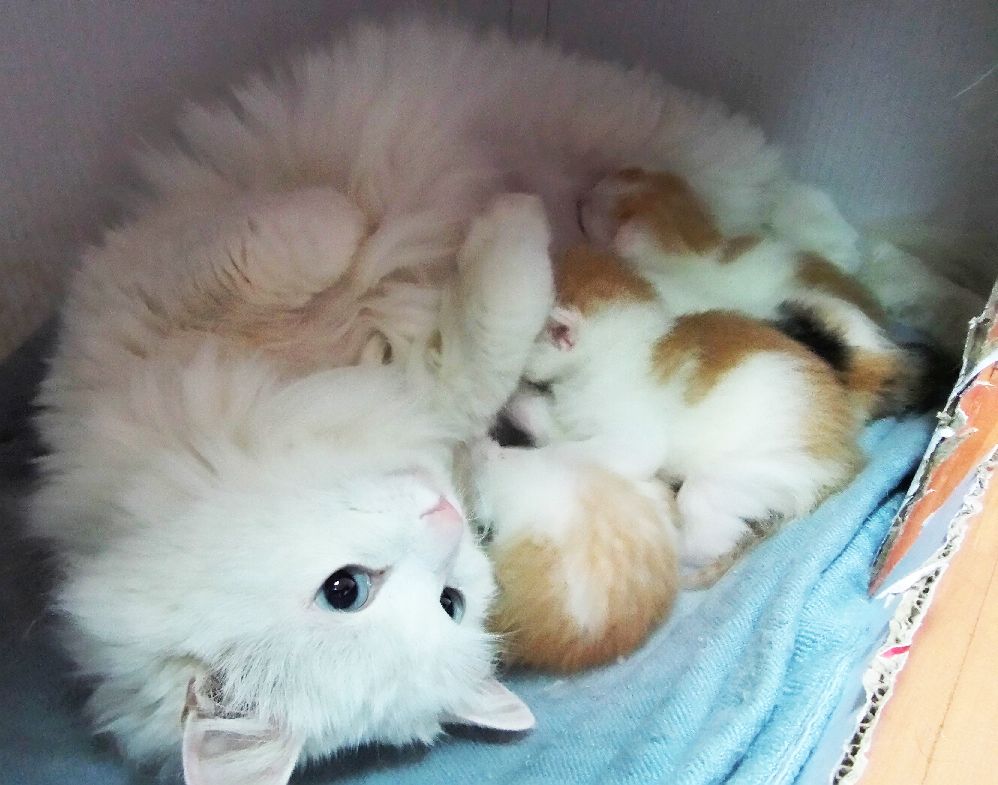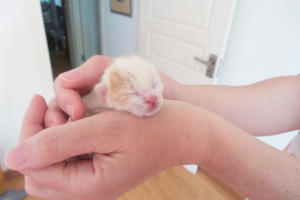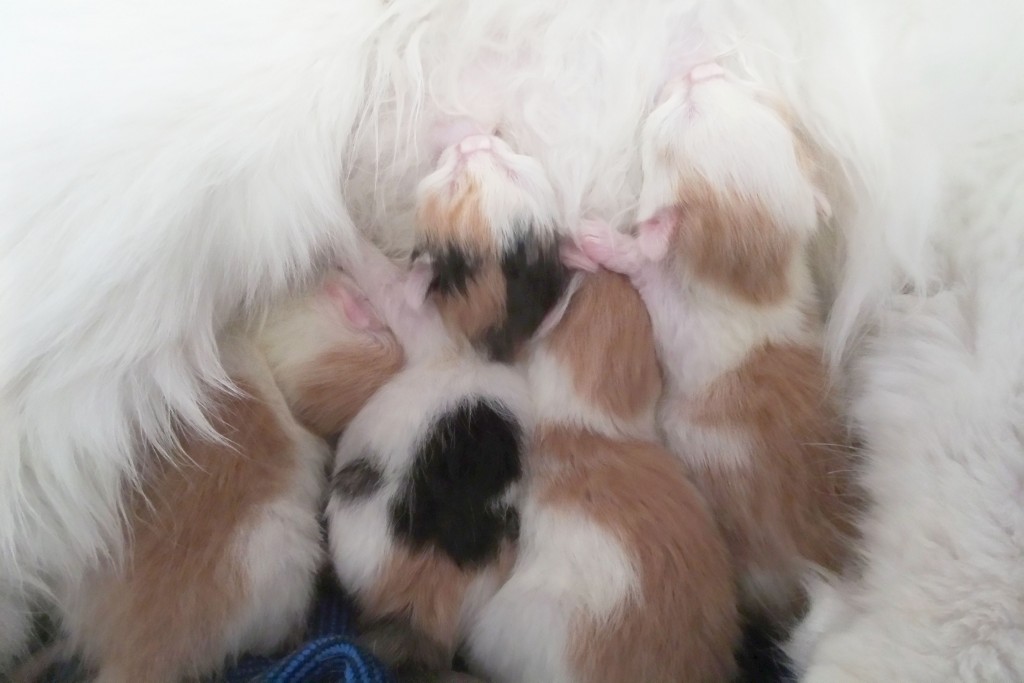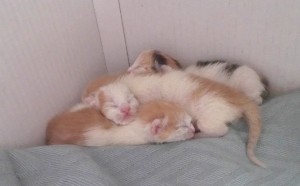A letter regarding cats taking pills:
Dear Baker,
The vet said I have gingivitis and now I have to take pills. I hate taking pills, and as a cat, I have no concept that I need the pills or my teeth will get infected and have to be pulled out. Any advice? Please tell me it’s all a bad dream.
Your fan,
Stinky Cat Breath
Dear Stinky,
In our house, we consider pill time happy time! Are you psychocats, you may ask? Actually, it’s because we get our pills served in treats.
Play Spot the Kitty for FREE on your Android: click here to download!
Play Spot the Kitty on your Apple device: click here to download!
Pills in treats
My cat bro Lance also suffers from gingivitis, so we aren’t allowed wet food most of the time. Happily, whenever the vet says we have to take pills, our human smushes them up into a nice little bowl of delicious wet food. Mmm! Take twice a day, you say, Mr. Vet? Will do! How about thrice?
We find tuna canned in water (for humans) is the best wet food for masking the nasty taste of the pills. Of course, a cat can’t eat tuna all day every day (or can he? We have not been given the opportunity to try!) but a spoonful of tuna to help the medicine go down will not hurt anyone.
We have also had the good fortune of getting liquid medications in wet food.
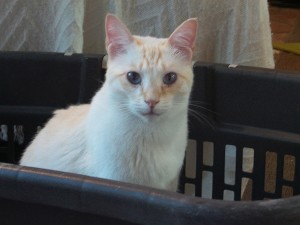
After growing up on the streets, Lancy suffers from recurring dental problems. Luckily, that means lots of medicine, which means lots of treats for both of us!
Pills that Can’t be Given in Food
Some pills work on an extended-release formula and can’t be smushed, or need to be taken on an empty stomach. Have your humom ask your vet if your pills can be smushed and served in wet food. Some pills are so yucky that no amount of wet food can mask the taste (we think! Our humans have never let us try taking pills in, say, a gallon of wet food…)
If it is essential that you take your pills whole, or worse yet, you have to take a big pill that’s cut into a smaller piece so it’s all jagged and crumbly, there are a couple of options.
Butter: Ever found the butter dish left unattended and helped yourself to a couple licks? Mmm, butter… Have your humans coat the pill in this slippery delicious yellow stuff to make it easier to swallow.
How to administer pills to a cat (a two-human method):
- Human One: Cuddle the cat and hold the scruff of its neck firmly. Alternately, you might want to try wrapping the cat firmly in a towel or fleece blanket.
- Human Two: With one hand, squeeze the sides of the cat’s jaw joint lightly and tilt his head back slightly. This will force the cat’s mouth to open. Place the pill as far back in the cat’s mouth as possible, and close the cat’s mouth.
- Human Two: Hold the cat’s mouth closed gently with one hand and gently stroke the cat’s throat downwards a few times with the other hand. This will stimulate swallowing.
- Human Two: Give the cat a little water with a syringe or dropper to make sure the pill goes down and doesn’t get stuck anywhere in the esophagus. The butter will also help with this.
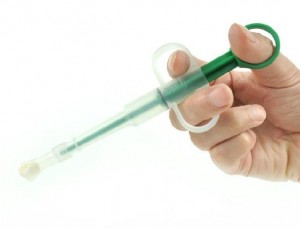
A useful tool for shoving a pill down a cat’s throat. Only to be used if the treats method is impossible.
Tools: Your vet or pet store may carry a pill gun. When Lance had to take pills that couldn’t be crushed (the jerk!), our humans had a lot of success with this little tool.
All they have to do is put the pill in one end, stick the pill end into the back of the cat’s mouth, and plunge the plunger. The pill pops right down his throat. In Lance’s case, this was also a two-human job. Our humans also held Lance’s mouth closed and rubbed his throat a little, as with the butter method above, just to make sure. The vet said to make sure they followed the pill with water administered with a syringe to ensure the pill goes down. This little baby will probably run you about twenty bucks.
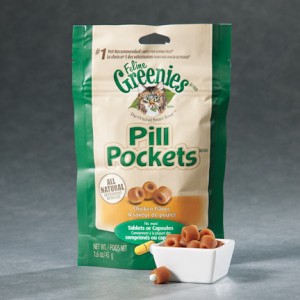
A delicious way for cats to take pills. That’s if the cat likes the taste of the treats. Just saying.
Greenies and some other pet treat companies make special treats designed for taking pills. We tried them and Lance said they didn’t taste good, but I ate them up even though I didn’t have to take any pills.
It’s too bad we’re more discerning than dogs. Our humans just have to shove the dog’s pill into a piece of chicken or cheese and she gulps it down obliviously! But if you try that with us cats, we will daintily nibble the cheese (or ignore it completely) and leave the pill behind.
So, Stinky, there you have it. Many ways to enjoy taking pills.
Your friend,
Baker
